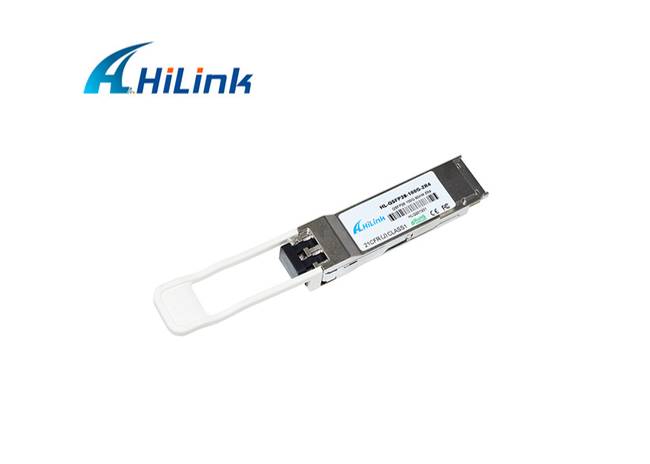How to Choose a 100G QSFP28 Optical Module?
Aug. 09, 2022
With the development of 100G Ethernet becoming a trend, the demand for 100G optical modules is increasing, and today 100G optical modules account for a large proportion of network construction costs. Among these optical modules for connecting 100G links, 100G QSFP28 has become the preferred module for 100G with its small size and low power consumption. 100G QSFP28 optical module supplier will take you closer to 100G QSFP28 and understand the specific differences and connections between these modules.
The 100G QSFP28 optical module is suitable for 100G Ethernet, EDR InfiniBand and 32G Fibre Channel and typically has exactly the same size and panel density as the 40G QSFP+. 40G QSFP+ uses four 10Gbps channels and the 100G QSFP28 module is similar, using four high-speed differential signal channels In addition, the QSFP28 has an upgraded electrical interface capable of supporting signals up to 28Gbps. The 100G QSFP28 offers higher density, lower power consumption and significant price advantages compared to other package types (CFP/CFP2/CFP4).
Standards for 100G QSFP28 optical modules
The standards for 100G QSFP28 optical modules are defined by two major organisations, IEEE and MSA, with IEEE defining the standards for QSFP28 SR4, QSFP28 LR4 and QSFP28 ER4. The term "QSFP" refers to the package of the optical module; "28" indicates a maximum transmission rate of 28Gbps per channel; "SR" indicates short distance (up to 100m), and "LR" indicates long distance. "LR" indicates long distance (up to 10km) and "ER" indicates extended distance (up to 40km); '4' indicates that the module has 4 channels. For example, QSFP28 LR4 means that this 100G long-range module can transmit 100G signals using 4 wavelengths up to 10km.

100GBASE-SR4 and 100GBASE-LR4 are the two most common 100G port specifications defined by the IEEE, but the QSFP28 SR4 is too short to meet all connectivity requirements and the QSFP28 LR4 is too costly for use in large data centres. It is a good thing that MSA has brought a new solution to the medium distance transmission market: the QSFP28 PSM4 and CWDM4 standards were born. Although QSFP28 LR4 covers the transmission distance of QSFP28 CWDM4, the cost of CWDM4 is far more affordable and competitive than LR4 for transmission over a distance of 2km.
How to choose a 100G QSFP28 optical module?
After introducing the different types of 100G QSFP28 modules, I believe you have a basic understanding of these modules, let's talk about how to choose a 100G QSFP28 module.
1. When the transmission distance is 5m-100m, you are recommended to choose QSFP28 SR4 optical modules, which can transmit up to 70m on OM3 fiber and 100m on OM4 fiber.
2. For distances between 100m and 2km, you can choose either QSFP28 PSM4 or QSFP28 CWDM4 modules, which are generally more expensive per unit than PSM4, but CWDM4 requires only 2 single-mode fibres for bi-directional transmission, whereas PSM4 requires 8 fibres, so the overall cost may be more expensive with QSFP28 PSM4. Therefore, the overall cost may be more expensive with QSFP28 PSM4. Therefore, in practice, it is necessary to take into account the specific transmission distance before deciding which module is suitable.
3. When the transmission distance is 10km-40km, either QSFP28 LR4 or QSFP28 ER4 can be chosen, the former can transmit up to 10km and the latter can transmit up to 40km.











